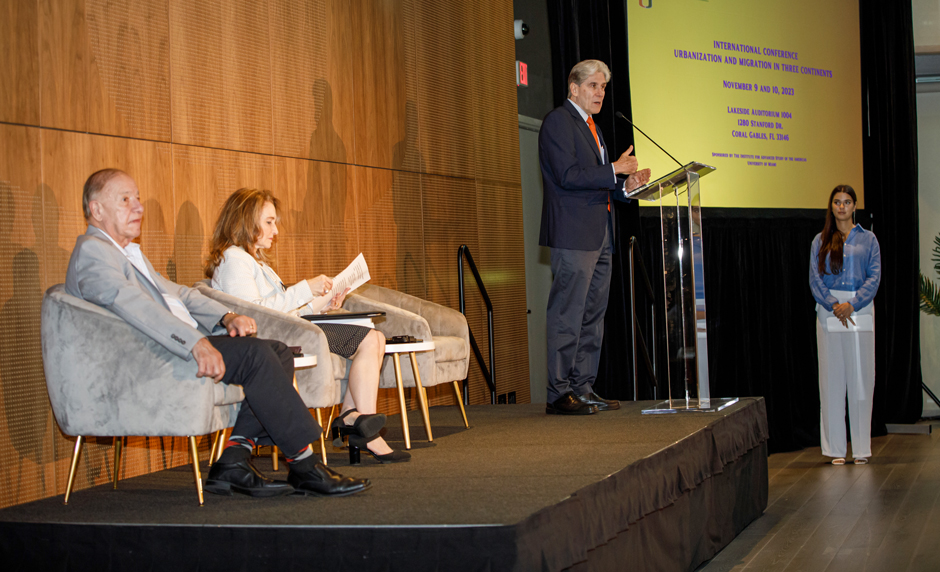Immigrants. They are often known as the fabric of our nation, those who have helped the United States achieve its financial prowess. But less often do people consider just how much these immigrant groups have shaped our cities.
And this is the case not just across America, but in other urban cores across the globe.
This influence of migrant groups on places like Miami, Los Angeles, Mexico City, Buenos Aires, and even London was the focus of several research studies presented during “Urbanization and Migration in Three Continents,” an international conference hosted by the University of Miami’s Institute for Advanced Study of the Americas. The Institute is directed by Felicia Knaul, an international health care economist and professor at the Miller School of Medicine.
The studies recently were published in the Journal of Ethnic and Racial Studies as a special volume, and Alejandro Portes, a sociology and law professor who leads the institute’s international migration initiative, said he is proud of the efforts to understand migrants’ impact on the formation of nine global cities.
“Before this exercise, I could not find any other recent efforts to bring the two topics [of urbanization and migration] together, and yet it’s a fact that major migrant flows in history have been both city builders, and city destroyers,” Portes said. “I hope this publication will set a point of reference for the interaction between these two fields.”

To unravel how different immigrant groups have influenced cities, a group of experienced sociologists, architects, and political scientists from across the hemisphere and Europe came together at the Lakeside Pavilion to summarize their work.
While Raúl Delgado Wise, a political scientist from the Universidad de Zacatecas, spoke about how Mexico City has evolved to have more migrants living on its periphery and traveling to places like Tijuana and Cancun for tourism jobs, Anthony Ocepek, a lecturer and political scientist at the University of Pittsburgh, spoke about the lingering inequality in São Paolo, Brazil, that remains because of the forced migration of indigenous Brazilians and enslaved Africans. In addition, Marcelo Cavarozzi, a political scientist at the Universidad Nacional San Martin, addressed the fragmentation of Buenos Aires and the growth of extreme poverty there, particularly among immigrants.
Then, the conversation shifted to cities in the United States, where scholars looked at the impacts of Hispanic and Asian immigrants in Los Angeles. Min Zhou, a distinguished professor of sociology and Asian American studies at University of California, Los Angeles, and Nicholas DiRago, a graduate student working with Zhou, explained the sharp divisions that still exist in Los Angeles between minority groups—who are often immigrants or their children—and white Americans. They noted the upward economic mobility of Asian immigrants in Los Angeles—particularly among the Chinese—while Hispanic immigrants often remain at a lower socioeconomic status along with African Americans.
“Socioeconomic inequality in LA has increased since the 1970s along Black-Latino and white Asian axes,” DiRago said.
Meanwhile in Miami, the strong and lasting impacts of the Cuban migration in Miami, starting in the 1960s, has attracted businesses from central and South America and helped shape the city into the emerging global metropolis it is today, according to Carie Penabad, a professor of architecture. University President Julio Frenk also noted the Magic City’s astronomic rise to prominence and how there is much that the University can learn from it.
“We are about to turn 100, and like Miami, we’re not too old, but an emerging global university,” he said. “The rise of these cities to positions of economic, financial, and cultural prominence did not happen by chance but because of decisive and sustained efforts by key constituencies. As the city grows, those of us who can provide academic resources are one of those constituencies who can be intentional about Miami’s geographic endowment.”

